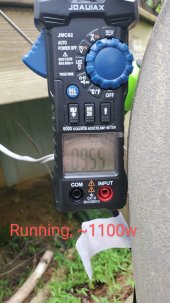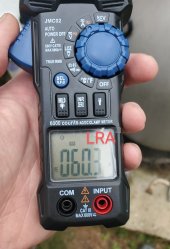Hi guys,
Inverter: Deye Hybrid 5KW
Battery: Meritsun 200ah
Panels: 14 x 330w
Pool Pump: 0.5HP Pentair WhisperFlo Standard Efficiency Pool Pump
0.5 HP = 372.85 Watts, correct?
When I turn on the pump I see a load increase by approx 1000 Watts and i am confused by that since the pump should be running closer to 400 watts.
Please help me to understand whats happening. Thx
Inverter: Deye Hybrid 5KW
Battery: Meritsun 200ah
Panels: 14 x 330w
Pool Pump: 0.5HP Pentair WhisperFlo Standard Efficiency Pool Pump
0.5 HP = 372.85 Watts, correct?
When I turn on the pump I see a load increase by approx 1000 Watts and i am confused by that since the pump should be running closer to 400 watts.
Please help me to understand whats happening. Thx






